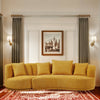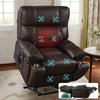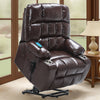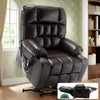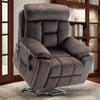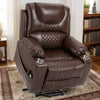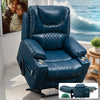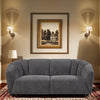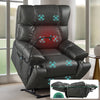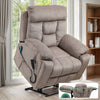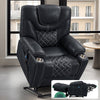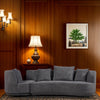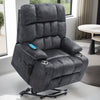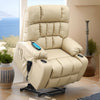Understanding Seniors Recliners: Features and Benefits
The Importance of Comfort and Support for Seniors
As we age, comfort and support become crucial for our well-being. Seniors recliners play a vital role in this aspect. They offer tailored support for aging bodies, reducing strain on joints and muscles. These chairs provide a cozy haven for relaxation and rest.
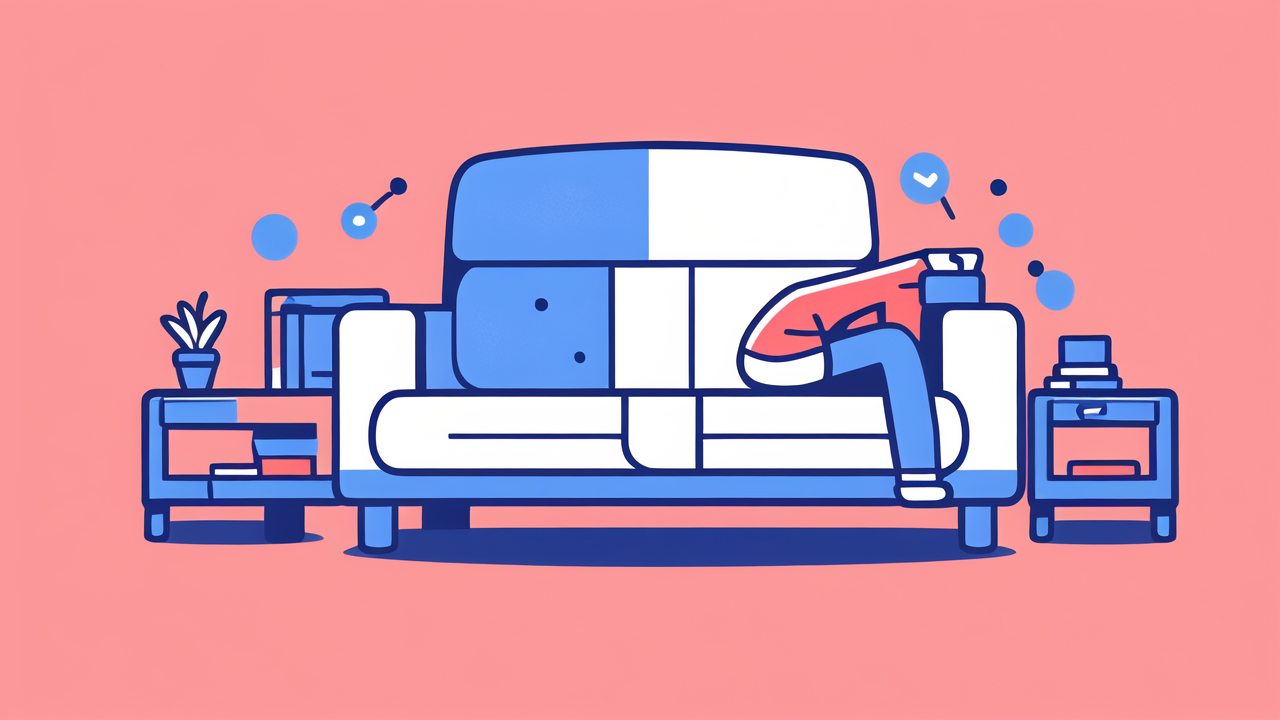
Good posture is key for seniors. Recliners help maintain proper alignment, easing back pain and improving circulation. They also aid in pressure relief, which is vital for preventing bedsores in less mobile seniors.
Many seniors struggle with sleep issues. Recliners can offer a comfortable alternative to flat beds. They allow for elevated sleeping positions, which can help with conditions like sleep apnea or acid reflux.
How Recliners Can Aid Mobility and Reduce Pain
Mobility is a common concern for seniors. Power lift chairs, a type of senior recliner, are game-changers. These chairs gently tilt forward, helping seniors stand up without strain. This feature reduces the risk of falls and promotes independence.
Pain management is another key benefit of seniors recliners. They offer various positions to alleviate discomfort. For example, elevating legs can help reduce swelling and improve circulation. Reclining can ease back pain by taking pressure off the spine.
Many seniors deal with arthritis or joint pain. Recliners with heat and massage features can provide soothing relief. These functions help relax muscles and increase blood flow, reducing stiffness and discomfort.
Evaluating Recliner Ergonomics for the Elderly
When choosing a recliner for seniors, ergonomics is crucial. The chair should fit the user's body size and shape. Look for adjustable features like headrests and lumbar support. These ensure proper alignment and comfort for extended periods.
The seat depth and height are important factors. Seniors should be able to sit with their feet flat on the floor. Their back should rest comfortably against the backrest. The armrests should be at a height that allows relaxed shoulder positioning.
Consider the reclining mechanism. It should be easy to operate, even for those with limited strength or dexterity. Power recliners offer smooth, effortless transitions between positions. This can be especially helpful for seniors with mobility issues.
Implementing Seniors Recliners in Long-Term Care Settings
The Role of Recliners in Enhancing Elderly Care
In long-term care settings, seniors recliners can greatly improve quality of life. They offer a sense of home and personal space in institutional environments. This can boost mood and overall well-being among residents.

Recliners can aid in daily care routines. They make it easier for staff to assist with tasks like dressing or personal hygiene. The lift feature helps caregivers transfer residents with less physical strain. This reduces the risk of injury for both seniors and staff.
These chairs can also support various therapies. Physical therapists can use recliners for exercises. Occupational therapists can practice daily living skills. Even speech therapists find recliners useful for positioning during swallowing exercises.
Best Practices for Selecting and Maintaining Recliners for Seniors
Choosing the right recliners for a care facility requires careful consideration. Durability is key, as these chairs will see frequent use. Look for sturdy frames and high-quality upholstery that's easy to clean.
Safety features are crucial. Anti-tip designs prevent accidents. Some recliners have built-in alarms to alert staff if a resident tries to stand unassisted. Consider chairs with battery backup to ensure function during power outages.
Regular maintenance is essential for longevity and safety. Establish a cleaning routine to prevent the spread of infections. Check mechanical parts regularly and lubricate as needed. Train staff on proper use to avoid damage and ensure resident safety.
Case Studies: Success Stories of Seniors Recliners in Care Homes
Many care homes have seen positive results after introducing seniors recliners. One facility reported a 30% decrease in fall incidents within six months. Residents felt more secure moving between sitting and standing positions.
Another care home noted improved sleep quality among residents using recliners. Many seniors who struggled with lying flat found comfort in semi-reclined positions. This led to better rest and improved daytime alertness.
A memory care unit introduced recliners with familiar designs. This helped create a more home-like atmosphere. Staff observed reduced anxiety and improved mood among residents with dementia. The chairs provided a safe, comfortable space for activities and relaxation.
Innovative Features and Technological Advancements in Seniors Recliners
Emerging Trends in Recliner Design for Seniors
The field of seniors recliners is constantly evolving. New designs focus on blending functionality with style. Modern recliners don't look medical, fitting seamlessly into home decor. This helps maintain a sense of dignity and normalcy for seniors.

Customization is a growing trend. Some manufacturers offer made-to-measure recliners. These ensure a perfect fit for each user's body type. Adjustable features like multi-position headrests and footrests are becoming standard.
Materials are advancing too. New fabrics resist stains and odors while remaining soft and breathable. Some chairs use memory foam or gel cushions for enhanced comfort. These materials also help prevent pressure sores in less mobile seniors.
How Smart Recliners are Changing Elderly Care
Smart technology is making its way into seniors recliners. Some models now include health monitoring features. They can track vital signs like heart rate and blood pressure. This data can be sent to caregivers or healthcare providers.
Voice control is another exciting development. Seniors can adjust their chair's position or activate features using simple commands. This is particularly helpful for those with limited mobility or vision impairments.
Some smart recliners integrate with home automation systems. They can adjust lighting or room temperature based on the user's preferences. This creates a more comfortable and personalized environment for seniors.
Future Directions for Seniors Recliner Development
The future of seniors recliners looks promising. Researchers are exploring ways to incorporate more advanced health features. We might soon see chairs that can detect changes in a senior's condition and alert caregivers.
Virtual reality integration could provide mental stimulation and entertainment. Imagine a recliner that transports seniors to virtual environments for relaxation or cognitive exercises. This could be especially beneficial for those with limited mobility.
As sustainability becomes more important, we may see eco-friendly recliner designs. These could use recycled materials or have easily replaceable parts to extend their lifespan. Energy-efficient motors and solar-powered options might also emerge.
In conclusion, seniors recliners are more than just comfortable chairs. They're tools for enhancing independence, safety, and quality of life for our aging population. As technology advances, these chairs will play an even greater role in elderly care and aging in place.







